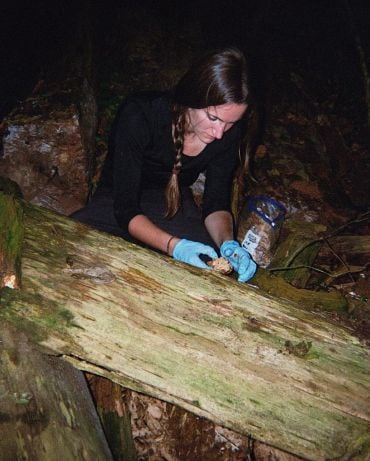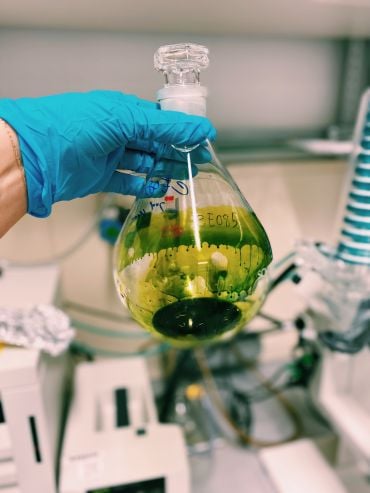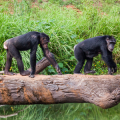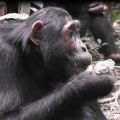Study shows wild chimpanzees seek out medicinal plants to treat illness and injuries
Chimpanzees appear to consume plants with medicinal properties to treat their ailments, according to a new study led by the University of Oxford, published this week in the journal PLOS ONE.

To investigate this, a team of researchers combined behavioral observations of wild chimpanzees (Pan troglodytes) with pharmacological testing of the potentially medicinal plants they eat. They monitored the behavior and health of 51 chimpanzees from two communities in the Budongo Central Forest Reserve in Uganda, who were habituated to the presence of humans.
Next, they collected plant extracts from 13 species of trees and herbs in the reserve that they suspected the chimpanzees might be using to self-medicate. These included plants that they observed sick or injured chimpanzees eating, but were not part of their normal diet, and plants that previous research has suggested chimpanzees might consume for their medicinal properties.
The extracts were then tested for their anti-inflammatory and antibiotic properties at Neubrandenburg University of Applied Sciences, led by Dr Fabien Schultz.
The researchers found that 88% of the plant extracts inhibited bacterial growth, while 33% had anti-inflammatory properties. Dead wood from a tree in the Dogbane family (Alstonia boonei) showed the strongest antibacterial activity and also had anti-inflammatory properties, suggesting that the chimpanzees may consume it to treat wounds. Interestingly, Alstonia boonei is also used as a medicinal plant in East African communities to treat a variety of conditions, including bacterial infections, gastro-intestinal issues, snake bites, and asthma.

The results provide compelling evidence that chimpanzees seek out specific plants for their medicinal effects. The study is the most in-depth analysis to date that combines both behavioral and pharmacological evidence of the medicinal benefits to wild chimpanzees of feeding on bark and dead wood.
Lead author Dr Elodie Freymann, from the University of Oxford’s School of Anthropology & Museum Ethnography, said: ‘To study wild chimpanzee self-medication you have to act like a detective—gathering multidisciplinary evidence to piece together a case. After spending months in the field collecting behavioral clues that led us to specific plant species, it was thrilling to analyze the pharmacological results and discover that many of these plants exhibited high levels of bioactivity.’
With both antibiotic-resistant bacteria and chronic inflammatory diseases becoming urgent global health challenges, the researchers note that the medicinal plants growing in Budongo Central Forest Reserve could aid the development of valuable new drugs.
Dr Freymann added: ‘Our study highlights the medicinal knowledge that can be gained from observing other species in the wild and underscores the urgent need to preserve these forest pharmacies for future generations.’
The study ‘Pharmacological and behavioral investigation of putative self-medicative plants in Budongo Chimpanzee diets’ has been published in PLOS ONE.
Based on a press release by PLOS
 Oxford Humanities team delivers framework for tackling modern slavery and human trafficking
Oxford Humanities team delivers framework for tackling modern slavery and human trafficking
 Nearly 500,000 children could die from AIDS-related causes by 2030 without stable PEPFAR programmes, Oxford experts estimate
Nearly 500,000 children could die from AIDS-related causes by 2030 without stable PEPFAR programmes, Oxford experts estimate
 Expert Comment: Why has Trump launched so many tariffs and will it cause a recession?
Expert Comment: Why has Trump launched so many tariffs and will it cause a recession?
 How monkeys and humans make novel choices
How monkeys and humans make novel choices Chimpanzees shown spontaneously 'taking turns' to solve number puzzle
Chimpanzees shown spontaneously 'taking turns' to solve number puzzle
 Chimps use clay to detox and as a mineral supplement
Chimps use clay to detox and as a mineral supplement